January 15, 1919. A bulging, overheated storage tank burst, spewing a towering wave of fast-flowing molasses into Boston’s busiest commercial district, killing 21, injuring 150, and wreaking tsunami-style devastation.
The incongruity of “molasses” and “disaster” tends to rob the legendary Great Molasses Flood of its gravitas. Better viewed as a horrific industrial accident, it offers up five lessons worth mulling over on its 96th anniversary.
1. Heed warning signs.
The massive tank, which held more than 2 million gallons, leaked so badly that neighborhood kids used to scoop up the puddles with pails. The owner, U.S. Industrial Alcohol (USIA) Company, chose camouflage as a solution when it repainted the gray tank to match the oozing molasses. Our Government may screw up, but let’s hope that part of our tax dollar continues to go toward safety inspectors who prevent such criminal negligence.
2. Expect unexpected consequences.
Nobody blames Prohibition for the flood. However, USIA had earmarked the molasses for rum production and filled the shoddy tank to the brim to outrace the Eighteenth Amendment. Prohibition passed the day after the disaster and took effect a year later.
3. Beware of “nice” Boston weather.
The temperature had swung from 2 degrees up into the 40s within a couple of days. While people stood around coatless in the sun chatting about the weather, the dark-brown syrup in the dark-brown tank nearby was overheating, fermenting, and building up deadly pressure.
4. Understand non-Newtonian fluids.
Like modern paints and other “shear thinning” non-Newtonian fluids, molasses turns from the tortoise into the hare under pressure. The same glob that seems like it will never make it from the jar to the measuring cup went from viscous to vicious, speedily flowing at 35 mph after erupting from the high-pressure storage tank. As it thickened, it smothered all in its path.
5. Remember the mightiness of molasses.
What people see today as a quaint old flavoring and quirky sweetener was once a staple in every home, the coin of the realm in the early American economy, and a major historical force. The Molasses Act of 1733 taxes helped foment the Revolution. Molasses was pivotal to the ignominious Triangular Slave Trade: West Indies molasses to New England; rum to Africa; slaves to the West Indies.
By the time of the flood, molasses was losing its hold on the New England economy. It no longer played a role in munitions production, which had kept it a hot commodity during World War I. Sugar had taken its place as a standard sweetener. Its star had faded, and it was slipping into a status of “old-fashioned.”
If this odd and tragic disaster had to happen somewhere, it’s not surprising it was Boston. Molasses had been so vital to everyday life—and central to the signature brown bread and baked beans that carried its name—that Boston could easily have been “Molassestown” rather than “Beantown.” The molasses tank was as relevant as today’s cell tower. This flood deserves to be remembered as the catastrophe that marked the end of the Molasses Era.
Except, of course, in my kitchen, which is happily stuck in the Molasses Era. And the Mighty Molasses Clove Cookie explains why.
As you bite into the crackled surface, it bites back with a jolt of spice and hearty molasses. The chewiness gives way to a supremely moist interior made possible through the miracle of molasses.
This is not a gingersnap; it has no ginger. Gutsy levels of cinnamon, cloves and vanilla awaken even the laziest taste buds. I buy molasses by the gallon, spices by the pound, and vanilla by the quart. I revel in recipes like this that don’t wimp out, that remind me of the mightiness of molasses. If you find you don’t have enough cloves or even molasses, come on by and I’ll give you some.
Mighty Molasses Clove Cookies
- 2 ½ cups flour
- ½ teaspoon salt
- 1 teaspoon baking soda
- 1 tablespoon ground cinnamon
- 1 ½ teaspoons ground cloves
- 1 cup sugar
- ¾ cup oil (I use canola)
- ½ cup molasses
- 2 teapoons vanilla
- 1 egg
- Extra sugar for sprinkling
- Preheat oven to 350°. Line 3 baking sheets with parchment paper.
- In a large bowl, combine flour, salt, baking soda, cinnamon and cloves.
- In another large bowl, beat sugar, oil, molasses and vanilla for about 3 minutes at medium speed to aerate.
- Add the egg to the wet mixture and beat about a minute.
- Blend the dry ingredients into the wet in 3 additions, mixing on low speed after each to incorporate thoroughly the dry ingredients. After the final addition, beat on medium for just a few seconds to get the dough uniform.
- Spoon a little shy of a tablespoon of dough onto the parchment paper for each cookie, placing cookies 2 inches apart. Flatten them slightly to form rough discs, and sprinkle lightly with extra sugar.
- Bake about 9-11 minutes, or until the tops crack. Remove sheets from oven and slide the parchment paper with cookies still on top onto cooling racks. Cool completely before removing and storing in an airtight container.

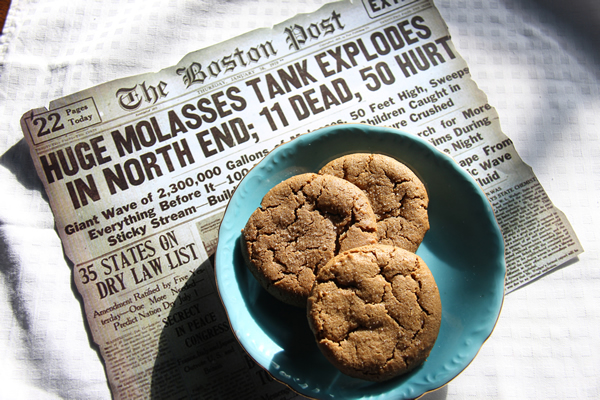
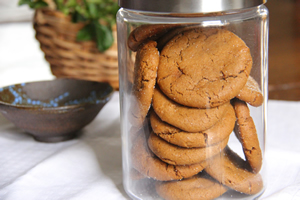

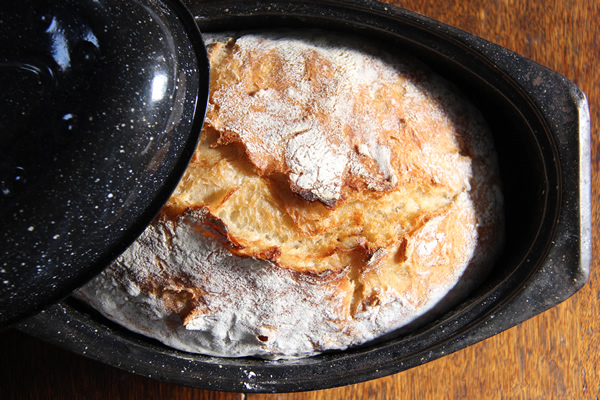
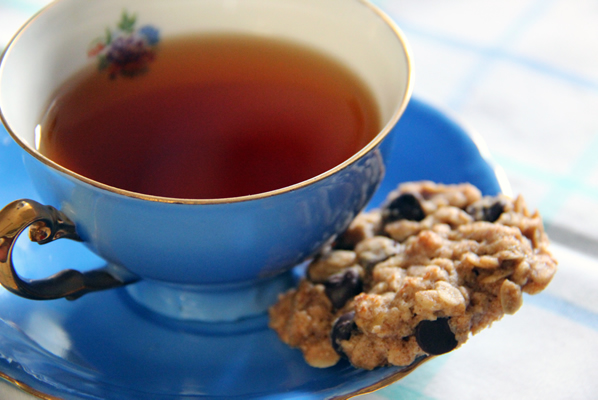
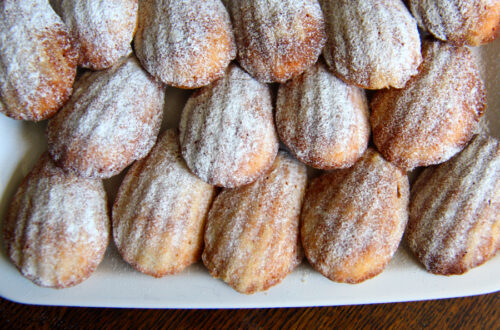
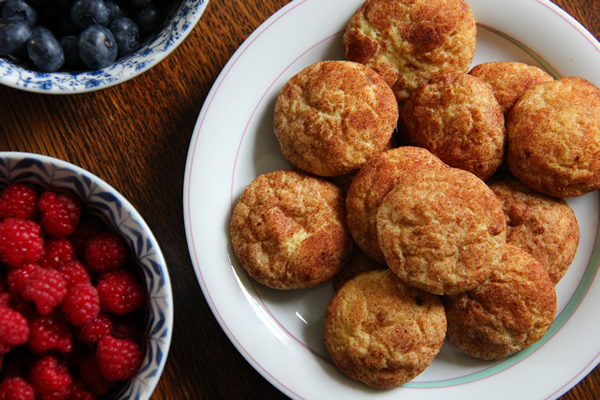

3 Comments
Pingback:
Chris
Hey, recipephany! Went looking for a great crusty bread recipe! No luck.
Need a reason to “keep my hands in warm water” on this nasty winter day!
May tackle those yummy molasses cookies though!
xo
Diane Brody
Thanks, Chris — you inspired me to post the No-Knead Rustic Bread that changed my life. You’re the Cookie Queen, so I hope you like the molasses clove cookies! Diane